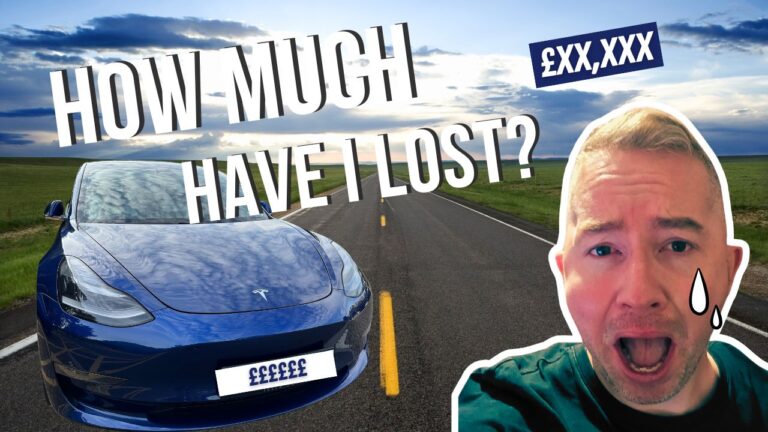November is a milestone month for me, as it marks two years since I bought my first electric vehicle – a 2019 Tesla Model 3 Performance. At the time, it felt like a significant leap forward, not just in terms of the technology I’d be driving, but also in terms of how I viewed the future of cars in general.
The decision to go electric had been building over time. I test-drove a Tesla the year before and was completely taken in by the speed, power, and general feel of the car. Everything about it seemed like a step ahead of what I had been used to, and the intuitive interface sealed the deal. It was obvious to me that electric vehicles weren’t some far-off future – they were already here, and Tesla was at the forefront.
The EV market, coming off the back of the pandemic, was buzzing. Prices were holding firm, and demand was high, with many people scrambling to get one. I was one of them. But at the time, it wasn’t an easy decision financially. Tesla models were expensive, especially in the second-hand market, and I couldn’t make the jump until I sold my other car.
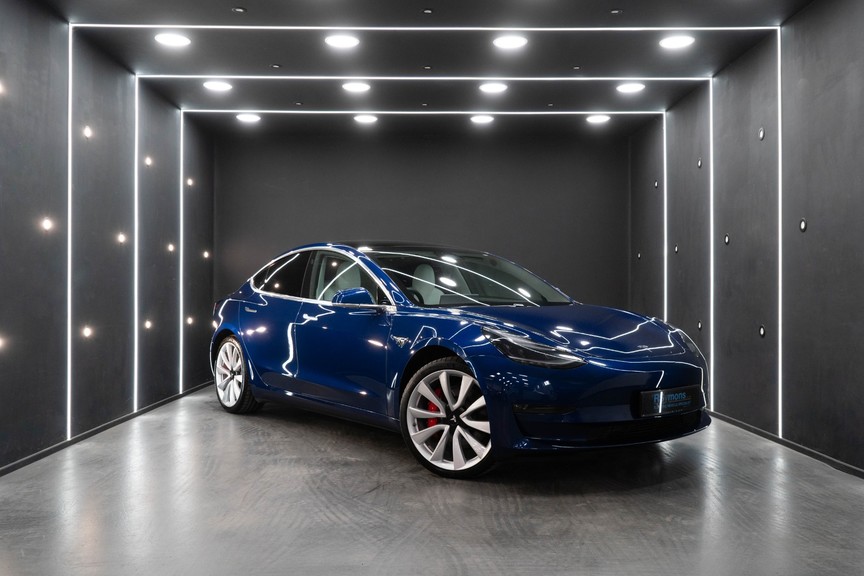
Buying an EV in those early days wasn’t straightforward either. There were a lot of unknowns, and car dealerships didn’t quite know how to handle them, especially when it came to transferring ownership or understanding the technology. But I did my research and came across R Symons, one of the few specialists who had built a reputation for selling, maintaining, and upgrading Teslas. While their prices were slightly higher, their knowledge and expertise made them the go-to people if you could afford it.
After putting down a sizeable deposit, my finance (hire purchase) was approved, and just like that, I got a call from Jolyon at R Symons congratulating me. Within 48 hours, my new-to-me Tesla was sitting on my driveway. It was a whirlwind moment.
First Impressions
I can’t describe how excited I was to finally own a Tesla. It was something that seemed out of reach for so long, and now, it was mine. Tesla, for many, represents the pinnacle of EV ownership, and I felt like I’d joined a club that I’d admired from afar.
Although my Tesla was a 2019 model, it was very similar to the 2021 version I had test-driven. It had all the advanced features – the suite of sensors, the large landscape touchscreen, and the same software updates that newer models received. It didn’t have the very latest battery tech, but being a Performance model, it had a solid range of around 300 miles and, importantly, all-wheel drive.
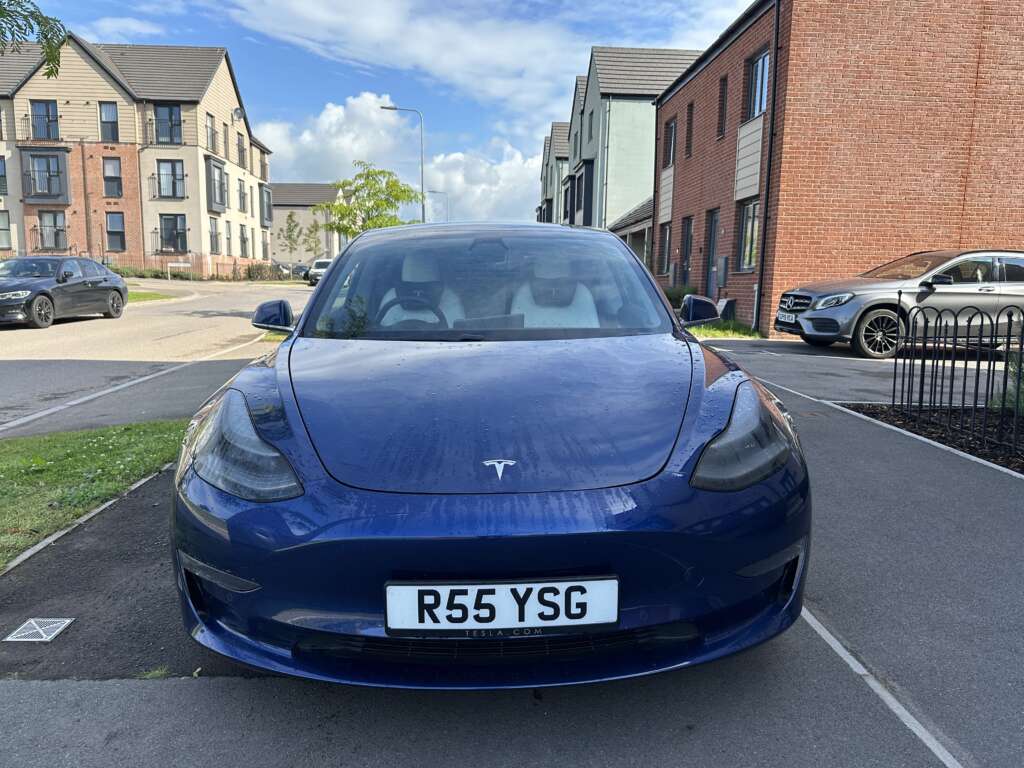
Best of all, it came in my favourite colour – blue. Jolyon helped me set up everything, transferred the ownership in just a few clicks, and off I went. I still smile when I think about the name he put into the system for me – “The Dream” – which I’ve kept ever since.
The Reality of Everyday Use
In the early days of owning the car, the Tesla Model 3 was everything I’d hoped for and more. The ease of use was exceptional, and the car’s performance was outstanding, even in challenging weather conditions. The only slight downside I noticed early on was that the range dropped in cold winter weather, but even then, with the long-range battery, it didn’t affect my daily routine.
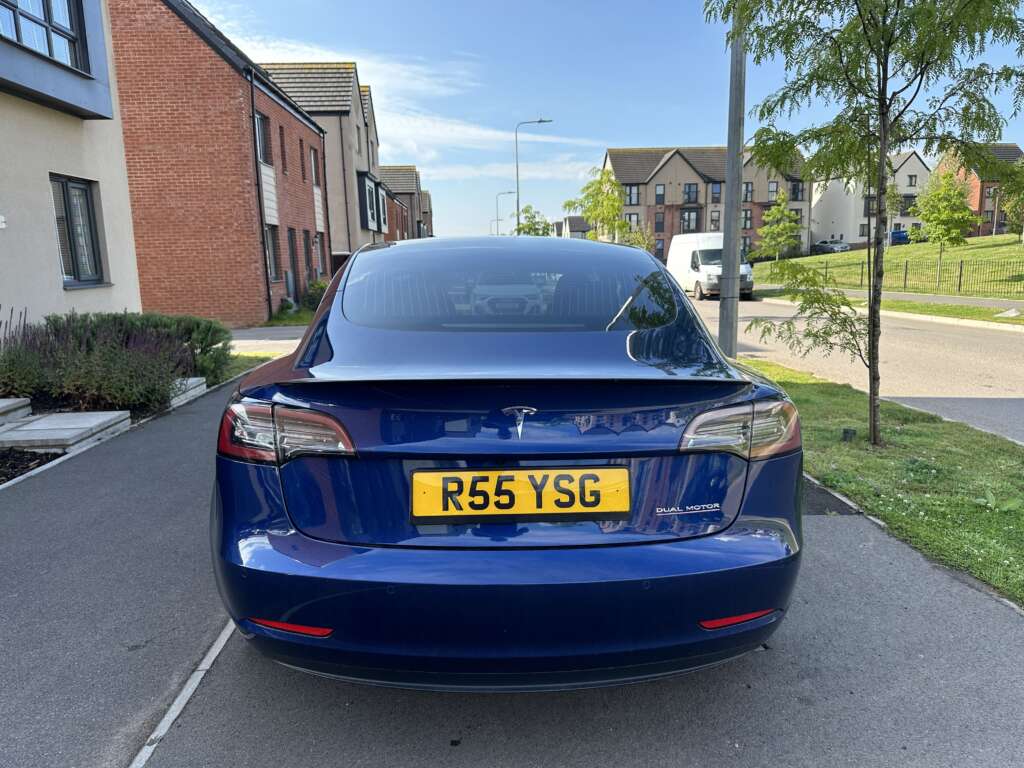
Charging the car, initially, was mostly done at the local Tesla Supercharger. At the time, Supercharging was still relatively expensive compared to home charging, but it was still cheaper than running a petrol car. I also took advantage of free charging at Tesco (back when they offered it) and used Zap Map religiously to find the cheapest or free charging points. I even started staying at hotels with free EV chargers when I travelled.
The real game-changer came when I got a home charger installed by Martyn of DMJones Electrical Contractors. Home charging was faster than using the 3-pin plug, and combined with a cheaper overnight tariff from British Gas, the costs plummeted. Suddenly, it was a third of the cost of filling up my old petrol car – a significant saving, which still holds true today.
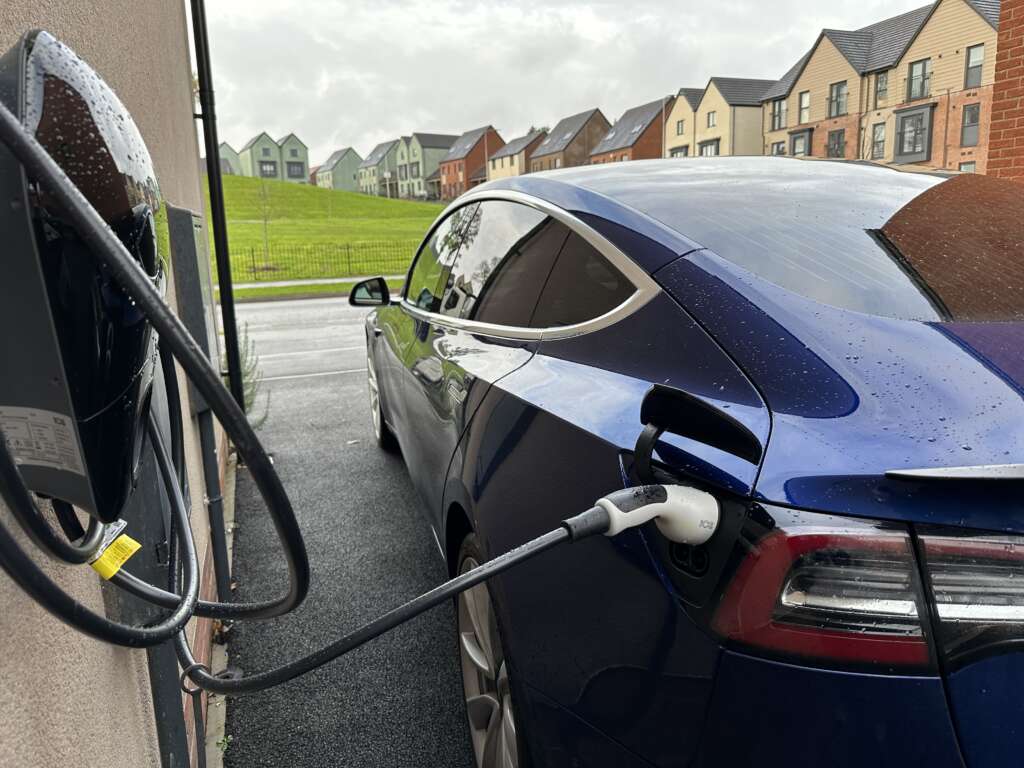
Range anxiety – something that people always ask about – was rarely an issue for me. The only time I worried about range was on long drives to places like London or West Wales. But as the charging infrastructure has improved, even that has become less of a concern. My Tesla Model 3 still gives me great range, and with more charging points popping up across the UK, range anxiety has become almost a non-issue.
One of Tesla’s biggest selling points is its software, and I have to say it’s lived up to the hype. The over-the-air updates are frequent and bring real improvements, not just gimmicks. Over the past two years, updates have improved things like the window wipers and added useful shortcut buttons. Tesla really feels like a software company that just happens to make cars.
Before I committed to buying the Tesla, I did test-drive a Mercedes petrol-hybrid, but the thought of maintaining a petrol engine didn’t appeal to me anymore. The Tesla, with its minimal maintenance requirements and lower running costs, was the clear winner. So far, it’s been pretty smooth sailing. Apart from one issue with the carbon spoiler, which started to flake and is out of warranty (Tesla wants to charge me an eye-watering amount to replace it, so I’ve just removed it for now), I haven’t had any significant issues.
I’ve replaced a couple of tyres – £250 each for Michelin – and earlier this year, I had to change the front brake discs and pads, which cost about £500 for Brembo parts. But all of this is fairly standard for a performance car and nothing out of the ordinary compared to my Mini Clubman JCW.
The Downsides
Has it been all plain sailing? Not quite, but nothing too dramatic either. The carbon spoiler issue is a minor annoyance, but other than that, the car has held up well. I’ve heard people complain about the build quality of pre-2021 Tesla models, and yes, there are some creaks in the trim, and the suspension isn’t as tight as it once was. But you have to remember that this isn’t a brand-new car. If I were to sit in a 2023/24 Model 3, I’m sure I’d notice a difference, but not enough to make me want to upgrade right away.
One of the biggest downsides, though, has been the depreciation. I knew cars depreciate – that’s just the nature of them unless you own something incredibly rare. But the second-hand market for EVs, especially Teslas, has taken a hit recently, and I’ve felt it.
Let me break it down:
- Purchase price: £43,995
- We Buy Any Car trade price today: £17,190
- Price difference: £26,805 in two years
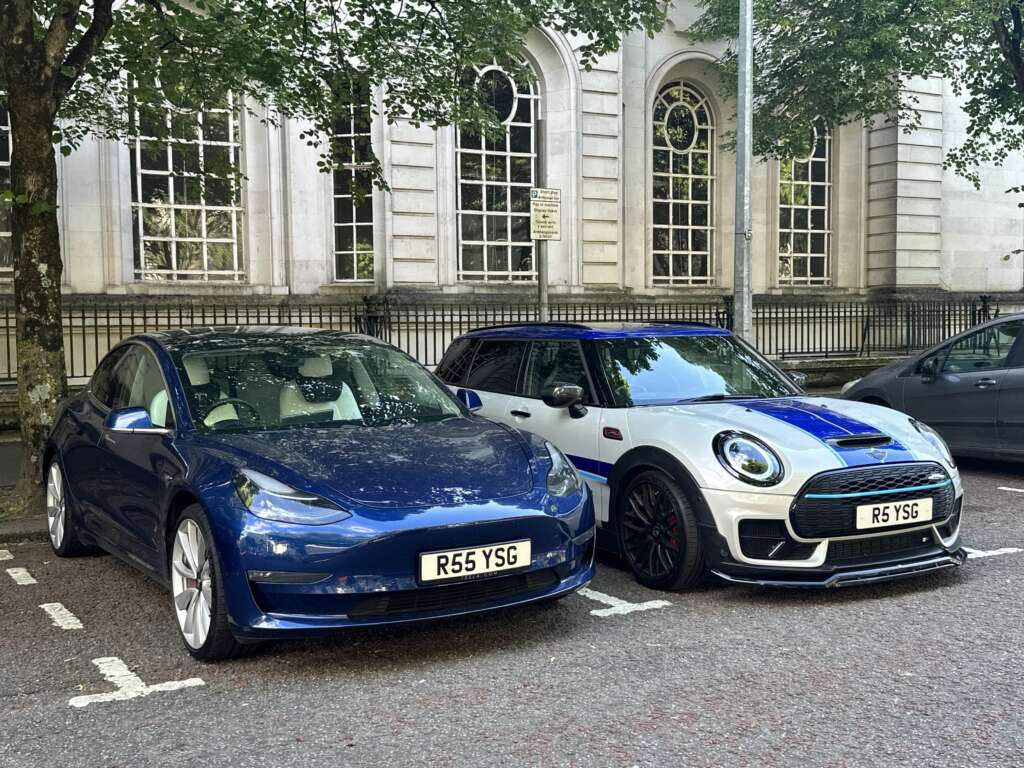
In contrast, my Mini Clubman JCW (a petrol car) has lost around £10,000 in value over 28 months. The hit on the Tesla has been painful, and I could easily write another blog about why I think this has happened. It’s partly due to external market factors, and partly due to companies like Tesla slashing the prices of their new models, which doesn’t help the second-hand market.
That said, because I put down such a large deposit upfront, my monthly payments are low, and I secured a fixed rate of 2.9%. While I’ve lost a lot in depreciation, I’m not stuck with high payments or a massive interest burden. If I had to sell the car today, I’d take a hit, but I’d still walk away with some cash.
Two Years On: Verdict
So, has the Tesla Model 3 Performance lived up to the hype? In many ways, yes. It’s still an incredible car, and while it may not have the very latest features, it’s still packed with plenty of useful technology. It drives well, and the performance hasn’t diminished at all. I still enjoy driving it, but it doesn’t feel quite as special as it did when I first bought it.
People often ask me if I regret buying an EV, and my answer is no – I don’t regret buying the car itself, and I don’t regret buying a Tesla. I love the car. What I do question, however, is the way I bought it. If I were to do it again today, I probably wouldn’t buy outright or on hire purchase. Leasing seems like the safer bet, especially with the way EVs are currently depreciating.
If you’re thinking about buying an EV, my advice would be to look for a good lease deal. That way, the financial risk is much lower, and you won’t be the one absorbing the depreciation. But if you’re in the market for a Tesla Model 3 Performance (2019), well, I’ve already taken the hit, so you’d be in a better position than I am.
At the end of the day, cars – even electric ones – are depreciating assets, and EVs are no exception. However, if you’re passionate about going electric, it’s still a fantastic driving experience.
If you have any questions about owning an EV, feel free to reach out to me on Instagram or LinkedIn. I’d be more than happy to share my experiences.

